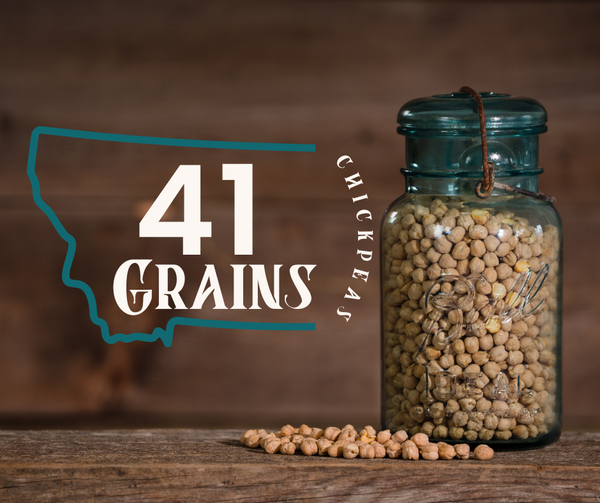
The History of Dryland Farming in Eastern Montana
Kacie SikvelandShare
The History of Dryland Farming in Eastern Montana
Dryland farming, a method of cultivating crops without irrigation, has a deep-rooted history in the plains of Eastern Montana. The vast, arid region has always posed a unique challenge to agriculture, but through innovation, perseverance, and adaptation to the land, dryland farming has shaped the area’s agricultural legacy. This method has been essential for farmers in Eastern Montana, where water is scarce, but the potential for farming remains.
Early Beginnings: A Harsh Landscape
The history of dryland farming in Eastern Montana begins in the late 1800s when settlers moved westward to take advantage of the Homestead Act of 1862. This act granted 160 acres of land to settlers who were willing to farm it for five years. Eastern Montana, part of the Great Plains, was an arid region with limited rainfall, especially in the summer months, making traditional irrigation impractical.
The first pioneers had to contend with tough soil, harsh winters, and unpredictable rainfall patterns. Many believed that farming would be unsustainable without irrigation, and for some, the dry land proved too challenging. However, the settlers’ grit and innovation led to the development of techniques that would define dryland farming in the region.
The Early 1900s: Developing Dryland Techniques
As Eastern Montana’s farmers struggled with dry conditions, they began to develop strategies suited to the land's environment. One of the early solutions was crop rotation, which allowed the soil to recover nutrients and prevented the depletion of resources that could occur with monocropping. Wheat became a primary crop because it was well-suited to the semi-arid climate.
In the early 20th century, advances in farming technology, including the introduction of new plows and improved seed varieties, further enhanced the viability of dryland farming. These tools helped break up the tough soil and allowed farmers to plant more efficiently, even under challenging conditions. The region’s hardy wheat crops started to thrive, and Eastern Montana became known for its vast wheat fields.
The Great Depression and the Dust Bowl: A Hard Blow
The Great Depression and the Dust Bowl of the 1930s were significant events that reshaped dryland farming in Eastern Montana. The combination of over-farming, drought, and poor soil management led to catastrophic dust storms that swept across the plains, damaging crops and livelihoods. The Dust Bowl’s impact was felt deeply in Eastern Montana, where dryland farming practices were challenged to their breaking point.
During this time, the government introduced programs like the Soil Conservation Service (SCS), which promoted better land management techniques such as contour plowing, terracing, and planting cover crops. These initiatives aimed to reduce soil erosion and restore the land that had been degraded by years of unsustainable farming practices. The New Deal programs provided some relief, but the region’s farmers were left to rebuild, learning valuable lessons about the importance of soil health and sustainability.
Post-World War II: Technological Advancements and Expansion
After World War II, technological advancements revolutionized farming, including the development of new fertilizers, pesticides, and machinery that made dryland farming more efficient. The post-war era saw a boom in agricultural production, and Eastern Montana’s wheat farmers took advantage of new crop varieties and improved farming techniques.
The mechanization of farming allowed farmers to cover more land with less labor. Tractors, combines, and other equipment made it easier to plant, cultivate, and harvest crops on a large scale. Farmers were able to increase their yields despite the continued challenges posed by the region’s unpredictable rainfall. Dryland farming expanded, and Eastern Montana became one of the primary wheat-producing areas in the United States.
The 1980s and Beyond: Shifting Focus and Sustainability
By the 1980s, Eastern Montana’s farmers had become accustomed to the challenges of dryland farming, and new methods began to take hold that emphasized sustainability. Conservation tillage, or no-till farming, became a popular technique. This method left the previous year’s crop residue on the field, reducing soil erosion and moisture loss. It allowed farmers to maintain healthier soil and to adapt to increasingly variable rainfall patterns.
In addition to these practices, farmers began to diversify their crops beyond wheat, growing barley, oats, and pulses, which could also withstand dry conditions. Eastern Montana’s economy became more resilient as farmers adapted to global market demands and changing environmental conditions.
Modern Dryland Farming in Eastern Montana
Today, dryland farming continues to be an essential part of Eastern Montana’s agricultural landscape. While the challenges of the past remain—unpredictable weather, droughts, and economic pressures—farmers have a wealth of knowledge and technology at their disposal. Precision agriculture, the use of sensors, and satellite imagery help farmers make informed decisions about planting, irrigation, and harvesting. Additionally, modern crop varieties have been bred to withstand drought and require fewer resources.
The legacy of dryland farming in Eastern Montana is one of resilience. Farmers have learned to adapt to a tough environment, continuously innovating to ensure the land remains productive. The methods developed in the region continue to influence farming practices around the world, particularly in arid regions where water is scarce.
Conclusion
The history of dryland farming in Eastern Montana is a story of adaptation, innovation, and perseverance. From the early settlers who carved a living from the land to the modern farmers who embrace sustainable techniques, the region’s agricultural practices have evolved in response to both environmental and economic challenges. As the future of dryland farming continues to unfold, the lessons learned in Eastern Montana will continue to serve as a testament to the resilience of those who work the land, ensuring that the dry plains remain a vital part of America’s agricultural heartland.
